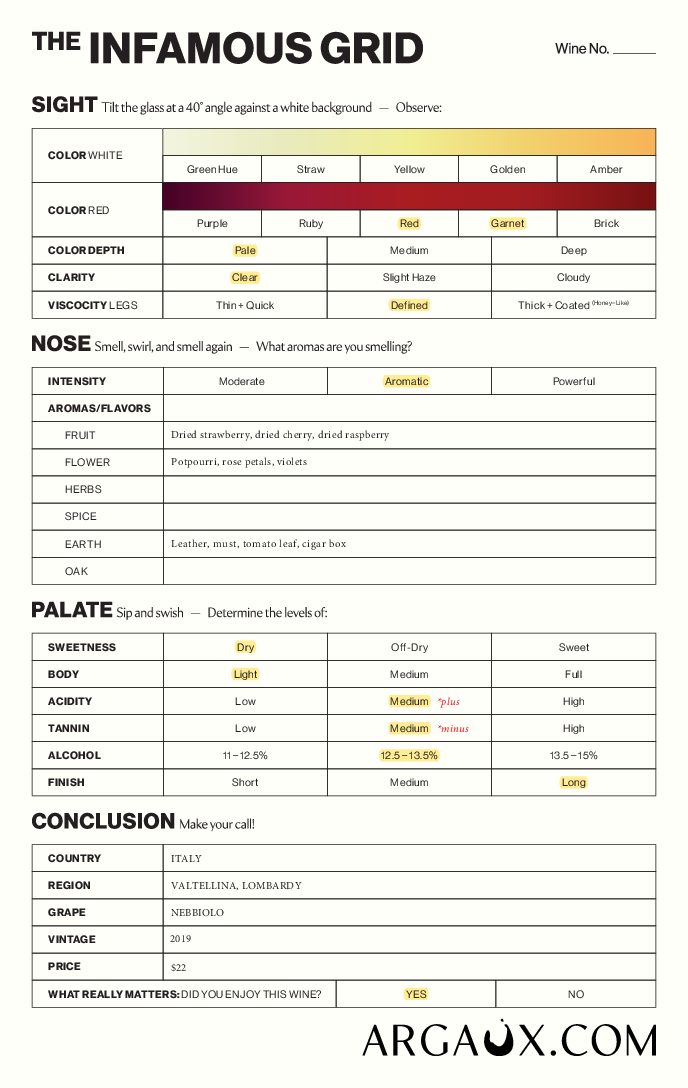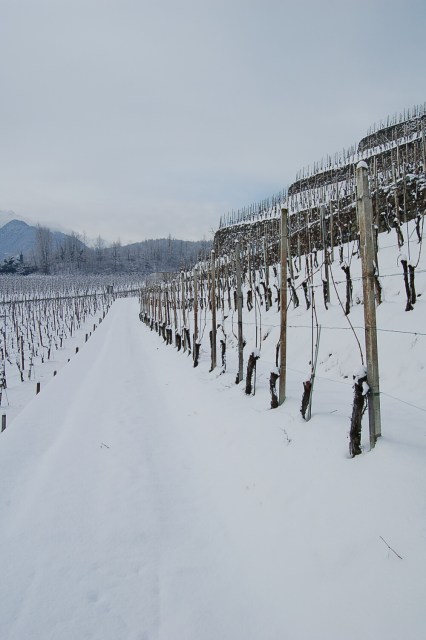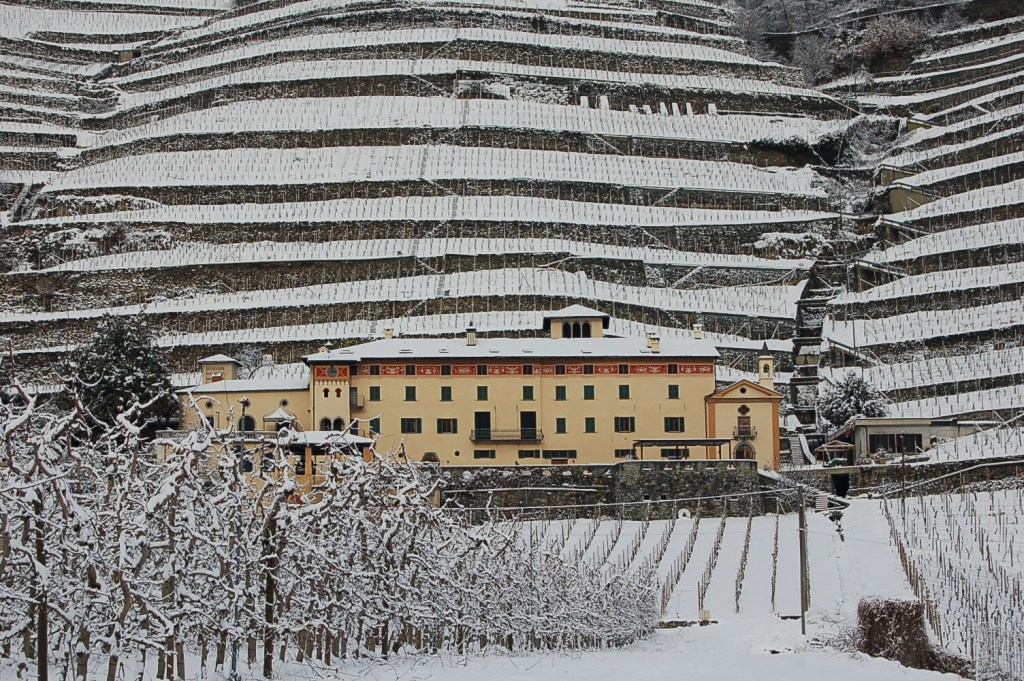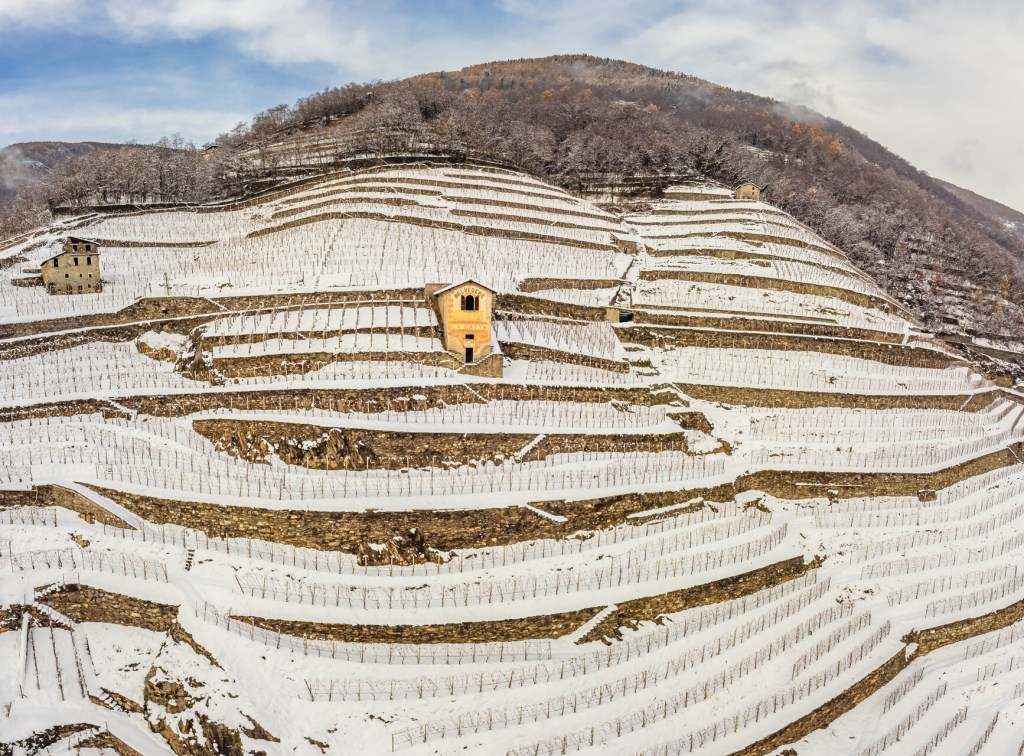2019 Casa Vinicola Triacca ‘Gaux Dopo’ Nebbiolo
This Alpine Nebbiolo is energetic, zippy, and remarkably fresh. The stainless steel fermentation maintains the wine’s bright fruit character, floral quality, and natural suppleness.
Sustainable farming practices and only 100 cases produced!
$22.00
Out of stock
Pairs with
The “La Gatta” estate was originally built in the 1500s as a Dominican monastery and was later purchased as a summer home for the aristocratic de Gatti family, from which the name derives. The Triacca family acquired the old monastery in 1969, which is surrounded by 13 hectares of vigorous vines grown on the steep hillsides of the Italian Alps. In 1987, Domenico Triacca acquired 2,000 square meters of vineyards in Valgella, one of the most highly sought after vineyard areas in Valtellina and built himself a small cellar to start producing and aging wines from his own vineyards. Today, Lucca Triacca runs the estate and is known as one of the most innovative Valtellina producers.
Valtellina lies in an Alpine valley in the northern part of the country in the Lombardy region. It actually forms part of the border between Italy and Switzerland and historically has been Swiss and Austrian territory before becoming part of Italy in 1859. The area benefits from a cool, mountain climate, though ‘La Breva,’ a gentle wind that originates over Lake Como, moves warm air into the valley and helps promote pollination in the spring. The vineyards lie on extremely steep slopes and tiny terraces (similar to the Mosel or Alto Adige) requiring it all to be worked by hand. Some suggest that Nebbiolo may have even originated in Valtellina! Today, it is known for its bright, cherry-scented Nebbiolo, known here as Chiavennasca (after the nearby town of Chiavenna).
“Nebbiolo from Valtellina has always been one of my favorite expressions of this grape. It’s Alpine wine; a much lighter and fresher version of your typical Nebbiolo from Piedmont that you might be more familiar with. They are high acid, food-friendly wines that are often significantly more affordable than your average Barolo. These wines are great with good company, a cheese & charcuterie plate, and some light pasta.” – Lexi Jones, Director of Imports
Related Items
-
2023 Domaine Garnier et Fils Chablis AOC
$36.00Chablis is a staple at Argaux. So when we decide to add a new one to the book, you better believe we have done our homework. This particular bottle was chosen after it won a blind tasting against 17 different bottles of Chablis. We invited our top Chablis clients to join us for the battle and this wine was voted #1. Enough said. It is a must-try.
Organic farming practices, native yeast fermentation, aged on the lees in stainless steel tanks for 11 months and filtered before bottling (no fining).
-
2019 i Clivi Friuli Colli Orientali DOC ‘Galea’ Friulano
$50.00This wine is a classic, ‘old school’ Friulano. It is earthy, deep, and strongly expressive of the Galea vineyard terroir from which it comes. Packed with sunshine, herbal flavors, nutty and
citrus notes, and a nice long mineral-driven finish.We love this wine for summer because of its brightness and freshness, yet uniquely complex and delicious character. Pair this beauty with your outdoor aperitivo, seafood, pastas, risottos, and light meats.
Certified Organic, 70 year old vines, hand-harvested, 24 mo. aging on the lees
-
New Arrival
2024 Chacra Patagonia Pinot Noir ‘Barda’
$40.00Crunchy and fresh, full of verve and utterly lovely. This Pinot from the Rio Negro in Patagonia is something we are going to be sipping on all summer long.
Organic and biodynamic farming practices, hand-harvested fruit, native yeasts, and bottled unfined/unfiltered.
-
2023 Domaine Marc Portaz Vin de Savoie ‘Apremont’ Tête de Cuvée
$22.00This crisp white from the French Alps is a true Apres Ski! France’s most mountainous region, the vines are 30 to 50-years-old and grown on the site of an ancient avalanche. It has similar fruit aromas to Sancerre and flavors as complex and mineral-driven as Chablis.
Sustainable farming practices, hand-harvested and native yeast fermentation.











